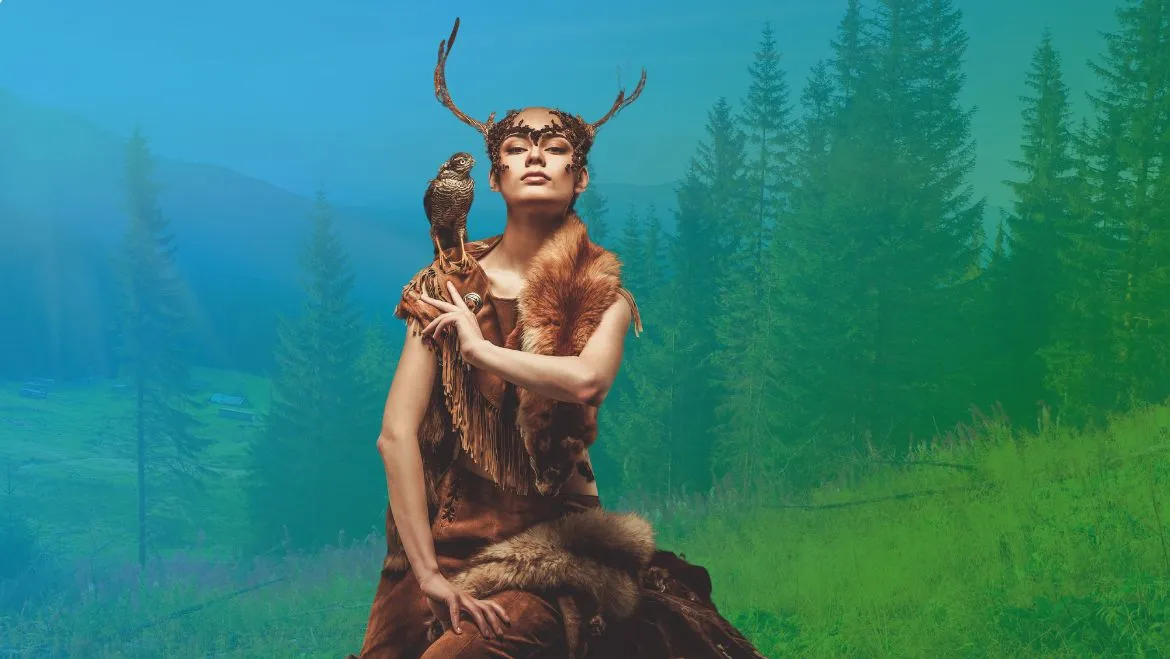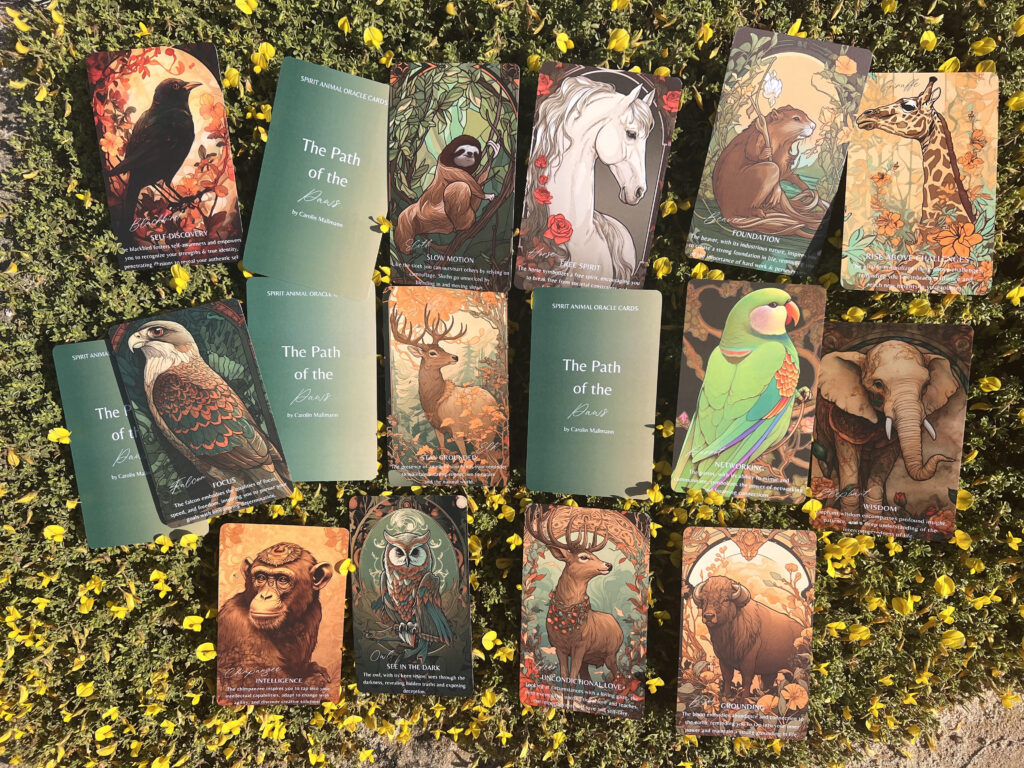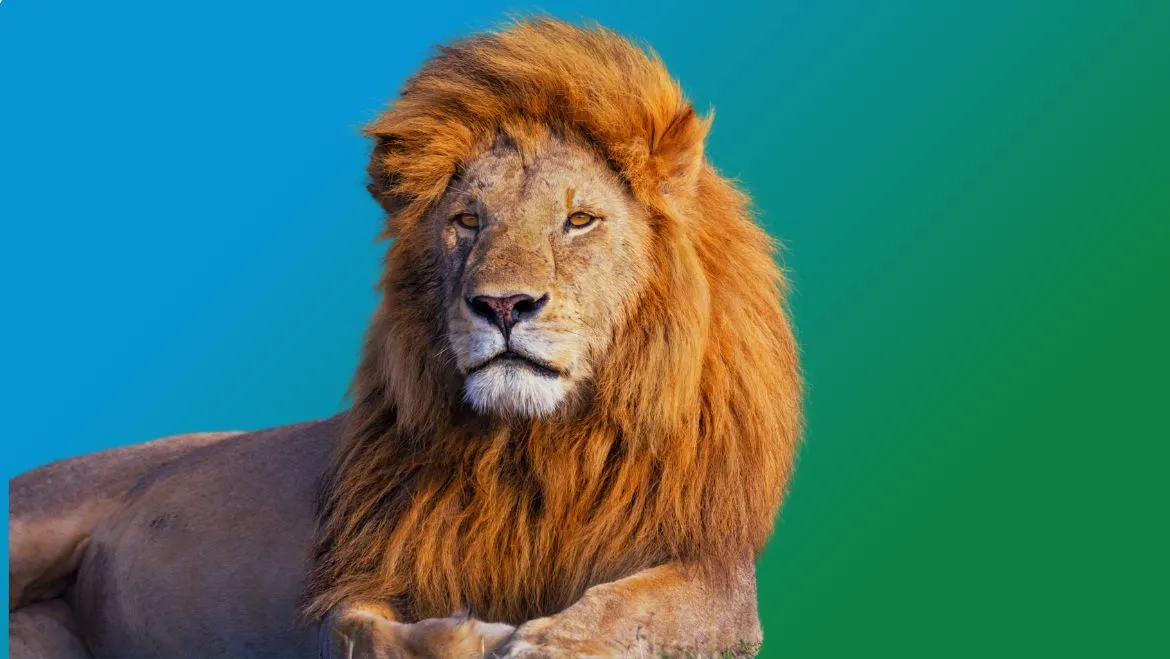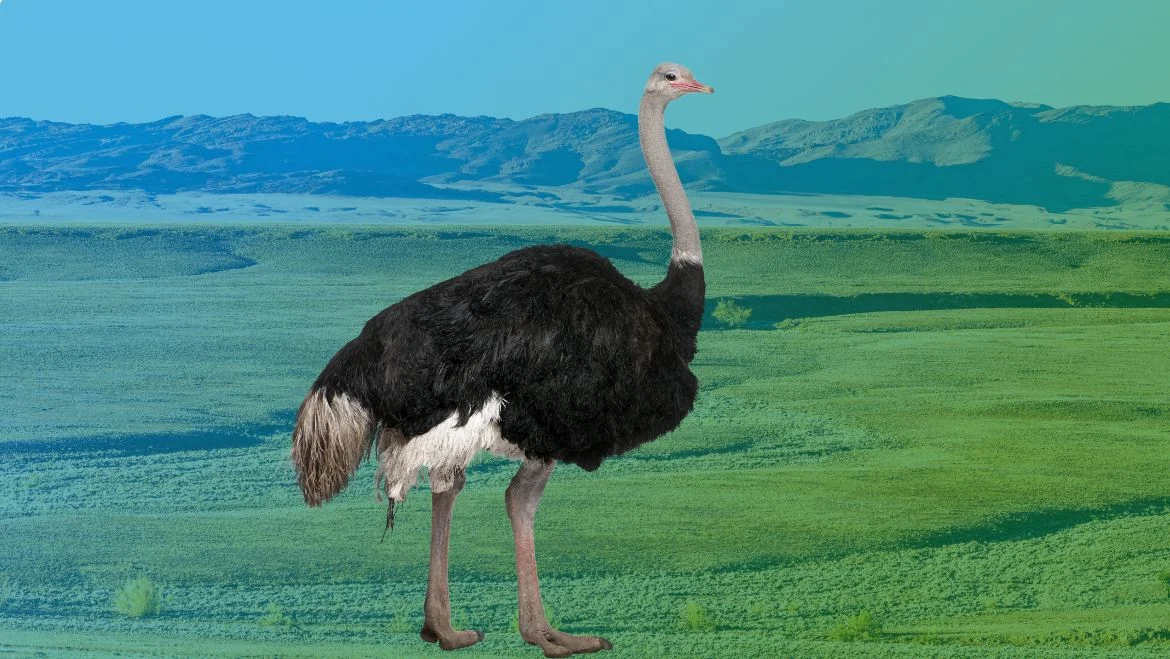Embark on a profound journey into the heart of shamanism, an ancient spiritual practice that weaves the rich tapestry of human connection with the mysteries of the universe. This comprehensive exploration delves into the essence of shamanism, unveiling its historical roots, core principles, and the transformative practices that have guided countless souls through the ages. Discover the pivotal role of shamans as the venerable mediators between the physical and the spiritual realms, and how their wisdom and rituals foster healing, balance, and a deep reverence for all life.
Introduction to Shamanism
Shamanism, often described as humanity’s oldest spiritual practice, transcends the boundaries of time and culture, connecting deeply with the universal human experience. This ancient practice, rooted in the primal need for connection and understanding, offers a bridge to the unseen world, providing insights and healing that modern society is only beginning to grasp.
The Essence of Shamanism
At its core, shamanism is about connection—connection to nature, to the spirit world, and to the inner depths of the human psyche. Shamans, the practitioners of this sacred tradition, serve as intermediaries between the physical world and the spiritual realm. They navigate these unseen landscapes to bring back wisdom, healing, and guidance for their communities.
A Universal Practice
What’s remarkable about shamanism is its universality. From the tundra of Siberia to the jungles of the Amazon, from the deserts of Africa to the mountains of North America, shamanic practices have independently arisen across the globe. Despite the vast diversity in rituals and beliefs, common threads weave through the fabric of shamanic traditions worldwide—a testament to their shared human origins.
Shamanism in Historical Context
Historically, shamanism played a central role in tribal societies, where shamans were not only healers but also storytellers, counselors, and mediators. Their ability to journey into other realms and communicate with spirits made them invaluable to their communities. They ensured the balance between the human world and the natural and spiritual worlds, a balance many modern seekers feel is missing today.

Shamanism and Modern Life
In recent decades, there’s been a significant resurgence of interest in shamanism. This revival can be attributed to a growing disillusionment with materialistic and mechanistic views of the world. People are seeking more holistic and spiritually fulfilling approaches to life, and shamanism, with its deep reverence for nature and its emphasis on personal spiritual experience, offers a compelling path.
Far from being a relic of the past, shamanism is incredibly relevant in today’s world. Its practices offer tools for personal transformation, healing, and a deeper understanding of the interconnectedness of all life. As we face global challenges such as environmental degradation and social disconnection, the shamanic perspective provides not only solace but also practical solutions for restoring balance and harmony.
The Journey Begins
For those drawn to explore the rich tapestry of shamanism, the journey is both inward and outward. It’s a path of discovery that can lead to profound personal growth and a renewed sense of purpose. Whether through direct participation in shamanic rituals, studying under experienced practitioners, or integrating shamanic principles into daily life, the journey of shamanism is open to all who seek it.
In this exploration of shamanism, we invite you to open your heart and mind to the wisdom of the ages. As we delve deeper into the historical roots, core principles, and practices of shamanism in the following sections, may you find insights and inspiration to enrich your spiritual path and connect more deeply with the world around you.
Historical Context of Shamanism
Shamanism is as ancient as it is diverse, its origins stretching back to the dawn of human spirituality. This practice, found in various forms across the globe, reflects humanity’s innate desire to understand the mysteries of life and the universe. By exploring the historical context of shamanism, we can appreciate its profound impact on human culture and spirituality.
The Dawn of Shamanism
Shamanic practices likely originated during the Upper Paleolithic period, over 40,000 years ago, as evidenced by cave paintings and artifacts that suggest rituals and a belief in the spiritual world. These early humans may have used shamanic trance states, induced by drumming, dancing, or plant substances, to enter the “spirit world” and communicate with the forces of nature.

Global Spread and Adaptation
Shamanism is not confined to a single geographic area or culture; it has been found in various forms across Siberia, Asia, the Americas, Africa, and Australia. Despite the vast distances and cultural differences, these shamanic traditions share common elements, such as the belief in an unseen world inhabited by spirits and the ability of shamans to mediate between the human and spirit worlds.
Each culture has adapted shamanism to its environment and spiritual needs. For example, the shamans of Siberia, where the term “shaman” originates, are known for their drumming and journeying into the spirit world. In contrast, Amazonian shamans often utilize plant medicines like ayahuasca to facilitate spiritual visions and healing.
Throughout history, shamanism has shown remarkable resilience and adaptability. With the spread of organized religions and colonialism, many shamanic practices were suppressed or went underground. However, they never disappeared entirely. In many cultures, shamanism continued to thrive, often blending with new religious or spiritual practices.
Shamanism and Anthropology
In contemporary times, there has been a resurgence of interest in shamanism, not only among indigenous peoples but also in Western societies. This renewed interest is part of a broader spiritual awakening, with individuals seeking more direct, personal connections with the spiritual realm and the natural world.
The study of shamanism gained momentum in the late 19th and early 20th centuries with the work of anthropologists like Mircea Eliade, who coined the term “archaic techniques of ecstasy” to describe shamanic practices. These studies helped to highlight the global presence of shamanism and its central role in many indigenous cultures.
Also Michael Harner was a prominent figure in the study and practice of shamanism, known for founding the Foundation for Shamanic Studies. He is widely recognized for his work in bringing shamanic practices to the Western world, particularly through his book “The way of the shaman” Harner’s approach, often referred to as “Core Shamanism,” distills and integrates the essential elements of shamanic practices from various cultures, focusing on the journey to the spirit world, power animals, and healing techniques. His teachings emphasize experiential learning and the universal aspects of shamanism, making it accessible to people regardless of their cultural background.
Core Principles of Shamanism
Shamanism is built on a foundation of principles that transcend cultural and geographical boundaries, embodying a profound understanding of the universe’s interconnectedness. This section explores these core principles, shedding light on the fundamental aspects that make shamanism a unique and powerful spiritual practice.
Interconnectedness of All Life
At the heart of shamanism lies the belief in the interconnectedness of all beings—humans, animals, plants, and even inanimate objects are considered to be alive and imbued with spirit. This web of life suggests that every action has a ripple effect on the whole ecosystem, emphasizing the importance of living in harmony with nature and all its inhabitants.

The Existence of Multiple Realms
Shamans operate with the understanding that the universe comprises multiple realms or worlds beyond the physical. Typically, these include the lower, middle, and upper worlds, each with its unique characteristics and inhabitants, such as ancestors, spirit guides, and deities. Navigating these realms through shamanic journeys allows shamans to gain wisdom, healing, and guidance.
The Role of Altered States of Consciousness
Central to shamanic practice is the ability to enter altered states of consciousness, which enable shamans to journey to other realms, communicate with spirits, and perform healings. These states are often achieved through various means, including drumming, dancing, fasting, or the use of entheogens (sacred plants).
The Power of Ritual and Ceremony
Rituals and ceremonies are vital in shamanism, serving as a means to connect with the spiritual realm, honor the spirits, and enact healing and transformation. These rituals can vary widely but often involve the use of sacred objects, chanting, offerings, and symbolic acts designed to invoke spiritual power and facilitate change.

Healing and Restoration of Balance
Healing in shamanism goes beyond the physical, addressing the spiritual and emotional aspects of well-being. Shamans work to restore balance and harmony within the individual and the community, often focusing on healing soul loss, removing spiritual blockages, and restoring power and vitality.
Respect for Tradition and Ancestral Wisdom
Shamanic practices are deeply rooted in tradition and the wisdom of ancestors. Respect for these traditions and the elders who carry them is paramount, as they provide the foundation upon which current practices are built and the guidance necessary for their proper use and understanding.
Personal Experience and Revelation
Unlike many other spiritual practices that may rely on dogma or scripture, shamanism places a strong emphasis on personal spiritual experience and direct revelation. Each individual’s journey is unique, and personal encounters with the spirit world are a key aspect of one’s spiritual development and understanding within shamanism.
Shamanic Practices and Rituals
Shamanic practices and rituals are the embodiment of shamanism’s core principles, providing a pathway for practitioners to engage with the spiritual realm, facilitate healing, and maintain harmony within their communities. This section explores the rich diversity of these practices, offering insight into the ways shamans connect with and harness the power of the unseen world.
Journeying
One of the most fundamental shamanic practices is the shamanic journey, a trance-like state where the shaman travels to non-ordinary realms to seek wisdom, guidance, and healing from spirit allies. This journey is often facilitated by repetitive drumming or chanting, serving as a bridge between the worlds.
The Three Worlds of Shamanic Journeys
Shamanic cosmology typically divides the non-ordinary reality into three distinct realms: the Lower World, the Upper World, and the Middle World. Each of these realms serves different purposes and hosts various spirits and entities with whom shamans interact.
- The Lower World: Often perceived as a nurturing and primal place, the Lower World is associated with nature, animal spirits, and ancient wisdom. It is not seen as “lower” in a hierarchical sense but rather refers to its deep connection to the earth and the roots of existence. Shamans journey to the Lower World to seek guidance from animal spirits, to learn survival skills, and to gain foundational wisdom.
- The Upper World: This realm is typically envisioned as a celestial or ethereal place, inhabited by higher spirits, ancestors, and deities. The Upper World is a source of divine inspiration, advanced spiritual knowledge, and profound healing energies. Shamans venture here to communicate with higher beings, to receive blessings, and to acquire advanced healing techniques.
- The Middle World: Reflecting the parallel to our immediate, physical world, the Middle World is a space where spirits that are closely related to the earthly realm reside, including spirits of the land, trees, rivers, and those that have not moved on. While it mirrors our world, it operates within a spiritual context, offering insights into the interconnectedness of all living things and the balance of natural forces.

The Essence of the Lower World
The Lower World is often envisioned as a realm filled with natural landscapes, such as forests, caves, valleys, and bodies of water. Unlike its name might suggest, the Lower World is not a place of evil or malevolence; rather, it is a place of healing, wisdom, and connection with ancestral spirits and power animals (spirit guides in animal form). This realm is typically accessed through a shamanic journey, often visualized as a descent into the earth, such as entering a cave, a tunnel, or a hole in the ground.
Spirits and Beings of the Lower World
The inhabitants of the Lower World are diverse and include ancestral spirits, spirit animals, and other guardian spirits. These beings are sought out for their guidance, healing powers, and protective energies. Spirit animals, in particular, are crucial in shamanic practice, as they are believed to embody the essence and qualities of the animal they represent, offering support, wisdom, and power to the shaman and those they aid.
The Upper World in Shamanism: Realms of Enlightenment and Divine Connection
In the tapestry of shamanic cosmology, the Upper World stands as a realm of higher spiritual planes, enlightenment, and divine connections. Unlike the earthly and ancestral energies of the Lower World, the Upper World is often associated with celestial realms, hosting a pantheon of spiritual teachers, guides, and deities. This realm is characterized by its luminous landscapes, often envisioned as ethereal and otherworldly, transcending the physical limitations of the Middle World.
Nature of the Upper World
The Upper World is typically perceived as a place of profound wisdom, advanced spiritual knowledge, and higher vibrational beings. It is a source of divine inspiration, profound healing, and enlightenment. The landscapes of the Upper World can vary widely, from vast, illuminated skies and floating islands to grand palaces and infinite libraries of universal knowledge.
The Middle World: The Realm of Everyday Existence
The Middle World, in shamanic cosmology, is our immediate, tangible reality—the physical world in which we live and interact daily. Unlike the transcendent Upper World and the introspective Lower World, the Middle World is characterized by its familiarity and direct relevance to our physical existence.
Nature of the Middle World
The Middle World is rich with the spirits of nature and the land, including trees, rivers, mountains, and all living creatures. It is in this realm that humans, animals, plants, and elements coexist, each imbued with its own spirit or essence.
Soul Retrieval
Soul loss is a concept in shamanism where parts of an individual’s soul are believed to dissociate due to trauma or significant life events. Soul retrieval involves the shaman journeying to recover these lost parts, restoring wholeness and well-being to the individual.
You can read here more about Soul Retrieval.

Power Animal Retrieval
Many shamanic traditions believe in spirit guides or power animals—spiritual entities that protect and guide individuals. A shaman may journey to find an individual’s power animal, bringing back its guidance and strength to support the person’s life journey.
You can read more about Spirit Animals in our extensive Spirit Animal Guide.
Divination
Shamans often use various forms of divination to gain insights into the future, diagnose spiritual illnesses, or find solutions to community problems. Methods can include reading natural signs, casting objects like bones or stones, or direct communication with spirits.
In the realm of spiritual practices and shamanism, divination is a means to gain insight, guidance, or understanding regarding questions or situations. These are some of the divination tools, such as oracle cards and stones, along with others that are commonly used:
Oracle Cards
Oracle cards are a popular divination tool that comes in many forms, each deck uniquely designed with its own set of symbols, themes, and messages. Unlike tarot cards, which follow a specific structure, oracle cards are more free-form and can be focused on specific areas such as angels, animals, or nature spirits. Users draw cards to receive guidance, clarity, or reflection on their journey or specific questions they have.
The Path of the Paws 🐾 Oracle Cards
The connection with animals has always been a deep, human ability. It guides us on our individual path – to our inner identity and to a fulfilling life.
“The Path of the Paws” is a unique oracle card deck that invites you on a journey of self-discovery and spiritual connection to your power animals.
Stones and Crystals
Stones and crystals are used in various ways for divination. Some practitioners use a collection of stones with runes inscribed on them, casting them and interpreting the patterns and symbols they form when they land. Others might use crystals for scrying, gazing into their surfaces to receive visions or insights. Each type of stone or crystal is believed to carry its own energy and symbolic meaning.
Runes
Runes are an ancient alphabetic script used by the Germanic peoples, including the Vikings, as both a language and a system of symbols. Each rune symbolizes a concept or force of nature. For divination, runes are typically carved on small pieces of wood, stone, or bone and cast onto a cloth or surface. The arrangement and the runes that face up are interpreted for guidance.

Pendulums
A pendulum is a symmetrical, weighted object suspended from a single chain or cord. It’s used for divination by asking questions and interpreting the direction of its swing. Different movements (back and forth, circular, diagonal) are assigned specific meanings like yes, no, or uncertain, allowing the practitioner to receive answers from the spiritual realm.

I Ching
The I Ching, or Book of Changes, is an ancient Chinese divination text and one of the oldest of the Chinese classics. It uses a system of 64 hexagrams (a combination of six lines that are either broken or unbroken) to provide guidance. The hexagrams are traditionally generated by randomly tossing coins or yarrow stalks, and the resulting hexagram is interpreted using the text.

Scrying
Scrying involves gazing into a reflective or translucent medium, such as a crystal ball, water, or mirrors, to receive psychic visions or insights. The images or symbols seen during scrying are interpreted by the practitioner to answer questions or reveal hidden knowledge.
Ogham Staves
Ogham is an ancient Celtic alphabet, and each character is associated with a particular tree or plant. Ogham staves, typically made from wood, are inscribed with these characters and used for divination. The staves are cast or drawn and interpreted based on the symbols that appear and their associations.
Tea Leaves (Tasseography)
Tasseography, or tea leaf reading, involves interpreting the patterns formed by tea leaves in the bottom of a cup. After drinking the tea, the residue leaves form shapes and symbols, which the reader interprets to gain insights into the querent’s past, present, or future.
Healing and Cleansing Rituals
Healing rituals are central to shamanic practice, addressing physical, emotional, spiritual, and energetic imbalances. These may involve the removal of negative energies, the use of plant medicines, or the channeling of healing energy from the spirit world. Cleansing rituals, such as smudging with sage or other sacred herbs, are used to purify individuals, objects, or spaces of unwanted energies.
Ceremonial Offerings and Sacrifices
Offerings and sacrifices are a way of honoring the spirits, seeking their favor, and maintaining a reciprocal relationship with the unseen world. These can vary widely from simple offerings like tobacco, food, or drink to more elaborate ceremonial sacrifices, always performed with respect and intention.
When you specifically want to communicate with the spirits of plants, offering tobacco can be a gesture of respect and a way to honor the spirit of the plant you wish to communicate with. It’s like presenting a gift to the spirit to strengthen your connection and express your intentions.
Drumming and Chanting
Drumming and chanting are not only methods for inducing trance states but also serve as prayers or calls to the spirits. The rhythms and sounds are believed to carry powerful spiritual vibrations, facilitating healing, protection, and spiritual communication.
For shamans, the drum is often revered as the heartbeat of Mother Earth, serving as a powerful and sacred tool in their spiritual practices. The rhythmic beating of the drum mirrors the pulsating life force that flows through all of creation, grounding the shaman and participants in the present moment and connecting them deeply to the earth and its cycles.
The sound of the drumbeat is believed to facilitate the shaman’s journey into altered states of consciousness, allowing them to traverse the spiritual realms. It acts as a bridge between the physical and spiritual worlds, guiding the shaman’s spirit on its journey to seek wisdom, healing, and guidance from the spirit world. The steady, heartbeat-like rhythm of the drum helps to induce trance states, making it easier for the shaman to slip beyond the veils of the ordinary reality and into the vast landscapes of the spiritual realms.
Festivals and Community Ceremonies
Many shamanic cultures celebrate seasonal festivals and community ceremonies to honor the spirits, mark significant transitions, and ensure the well-being of the community. These events often involve collective rituals, dances, storytelling, and feasting, strengthening the bonds between community members and the natural and spiritual worlds. The following are some common types of festivals and ceremonies found within various shamanic traditions:
- Seasonal Celebrations: These ceremonies mark the changing of the seasons, such as solstices and equinoxes. They honor the cyclical nature of life and often involve rituals to ensure balance and harmony between the earth and the community.
- Healing Ceremonies: These are conducted to heal individuals or the community, often involving the invocation of spirit helpers, ancestors, and the use of sacred plants or rituals to restore balance and well-being.
- Vision Quests: Often considered a rite of passage, a vision quest is a personal spiritual journey undertaken in solitude, usually in a natural setting, to gain insight, guidance, or healing from the spirit world.
- Animal Totem Ceremonies: These involve connecting with animal spirits or totems that are believed to hold specific qualities, wisdom, or power, seeking their guidance or protection.
- Plant Medicine Ceremonies: Utilizing sacred plants, such as Ayahuasca or Peyote, these ceremonies are conducted under the guidance of a shaman or healer to facilitate deep healing, spiritual insight, and communion with the spirit world.
- Rituals of Passage: Celebrating significant life transitions such as birth, coming of age, marriage, and death, these ceremonies acknowledge and honor the individual’s journey and their role within the community.
- Community Rituals: These include rituals for blessing the land, harvest ceremonies, and ceremonies to invoke protection or prosperity for the community.
- Ancestor Worship: Paying homage to the ancestors is central to many shamanic practices, with ceremonies designed to honor the dead, seek their guidance, or appease their spirits.
- Fire Ceremonies: Fire is often seen as a sacred element that transforms, cleanses, and communicates with the spirit world. Fire ceremonies can be for purification, renewal, or as offerings to the spirits.
The Role of the Shaman
The role of a shaman transcends that of a mere practitioner of rituals; they are the custodians of their community’s spiritual well-being, mediators between the physical and spiritual realms, and guides in the journey of life and beyond. This section delves into the multifaceted responsibilities and the profound impact shamans have within their communities.

Spiritual Healers and Guides
At the core, shamans are spiritual healers, tasked with the well-being of both the individual and the community. They diagnose and treat ailments not just of the body, but of the soul, often addressing issues that modern medicine might overlook. Through their intimate connection with the spirit world, shamans guide individuals in their personal journeys, offering insights, resolving spiritual disturbances, and facilitating transformative healing.
Mediators Between Worlds
Shamans stand at the crossroads between the physical and the spiritual, acting as bridges for communication and interaction. They negotiate with spirits, ancestors, and other entities for the benefit of their community, seeking guidance, protection, and support. This mediation is crucial in maintaining the balance and harmony between these realms, ensuring that the flow of energy remains positive and constructive.
Keepers of Wisdom and Tradition
Shamans are often among the most respected members of their communities, revered for their wisdom and deep knowledge of spiritual and herbal lore. They are the keepers of ancient traditions, stories, and songs, which they pass down through generations. This role is vital in preserving the cultural heritage and identity of the community.
Conductors of Rituals and Ceremonies
Shamans preside over a wide array of rituals and ceremonies, from rites of passage like birth, initiation, and death to seasonal and harvest festivals. These ceremonies serve to reinforce the community’s bond with the natural and spiritual worlds, marking significant life transitions and communal milestones.
Community Leaders and Counselors
Beyond their spiritual duties, shamans often take on leadership roles within their communities. They offer counsel and advice, mediate conflicts, and provide guidance on moral and ethical issues. Their deep connection to both the physical and spiritual realms positions them as wise and discerning leaders, capable of seeing beyond the surface to the heart of matters.
Environmental Stewards
Many shamanic traditions emphasize a profound respect for nature and its ecosystems. Shamans, understanding the intricate connections between all living things, act as stewards of the environment. They work to heal and protect the land, advocating for sustainable living practices and the preservation of natural habitats.
Navigators of Change
In times of crisis or significant change, shamans are often the navigators, helping their communities adapt and thrive. Their spiritual insights and connection to higher wisdom allow them to offer hope, direction, and renewal, even in the face of challenges.
Shamanism in the Modern World
In the tapestry of contemporary spirituality and healing, shamanism has experienced a remarkable resurgence, transcending its ancient roots to find a place in the hearts and minds of people seeking deeper meaning and connection in a rapidly changing world. This section explores the relevance of shamanic practices today, highlighting their integration into modern life and their potential to address some of the most pressing challenges of our time.
Integration with Contemporary Healing Practices
One of the most significant aspects of modern shamanism is its integration with various healing modalities, from psychotherapy to holistic medicine. Practitioners often combine shamanic techniques such as journeying, soul retrieval, and energy work with contemporary therapeutic practices, offering a comprehensive approach to healing that addresses the physical, emotional, spiritual, and mental dimensions of well-being.
Personal and Spiritual Development
Shamanism offers profound tools for personal growth and self-discovery. Modern seekers are drawn to shamanic practices for their transformative potential, using journeying and other techniques to explore their inner landscapes, uncover latent talents, and confront personal shadows. This path of self-exploration and development fosters a deeper sense of purpose, empowerment, and connection to the broader web of life.
Community Building and Connection
In a world where many feel isolated and disconnected, shamanic practices offer avenues for building community and fostering a sense of belonging. Drum circles, healing circles, and ceremonial gatherings create spaces where individuals can connect, share, and support each other on their spiritual journeys. These communal experiences reinforce the interconnectedness of all beings, promoting empathy, understanding, and mutual support.
Environmental Awareness and Activism
Shamanism’s deep reverence for nature and its teachings about the interconnectedness of all life resonate strongly with contemporary environmental movements. Shamans and shamanic practitioners are often at the forefront of ecological activism, using their spiritual insights and practices to advocate for the protection of the Earth and its ecosystems. This spiritual perspective on environmentalism emphasizes the sacredness of the natural world and our responsibility to care for it.
Navigating Global Challenges with Shamanic Perspectives
The principles and practices of shamanism offer valuable perspectives for addressing global challenges such as climate change, social inequality and cultural disintegration. By fostering a holistic view of the world that honors diversity, encourages sustainability, and promotes healing, shamanism contributes to the development of more compassionate, balanced, and sustainable ways of living.
- At the heart of shamanic practice is the belief in the interconnectedness of all living beings and the natural world. This holistic perspective encourages a profound respect for the environment and all its inhabitants, highlighting the impact of human actions on the planet’s ecosystems.
- Shamanic traditions are found in various cultures around the world, each with its own unique practices, rituals, and wisdom. This diversity within shamanism itself serves as a model for appreciating and honoring the rich tapestry of cultures and perspectives that make up the global community.
- Shamanism teaches that the natural world is sacred and that humans have a spiritual responsibility to protect it. This concept of sacred ecology underlines the importance of living in harmony with nature, using resources responsibly, and adopting sustainable practices that minimize environmental impact.
- The principles of shamanism advocate for a life of balance, respect, and harmony. By integrating these principles into daily living, individuals and societies can cultivate lifestyles that prioritize well-being, equity, and the common good. Shamanic wisdom encourages practices that nourish the spirit, honor the earth, and foster community connections, laying the foundation for a more compassionate, balanced, and sustainable world.
The Digital Age and Shamanism
The digital age has facilitated the spread of shamanic knowledge and practices, making them more accessible to a global audience. Online workshops, virtual ceremonies, and digital communities allow individuals to explore shamanism and connect with like-minded practitioners from around the world, expanding the reach and impact of shamanic teachings.








